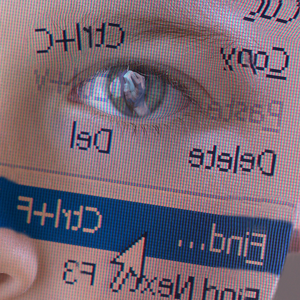Disturbances in Working Memory in Children

There is news from England about some research that indicates that many children who were thought to have low intelligence actually have a problem with working memory, the ability to hold information in your head and manipulate it mentally. It is largely genetic and if it fails to function normally it can affect long-term academic success into adulthood and prevent children from achieving their potential.
The researchers from Durham University surveyed over three thousand children in 35 schools across the UK using the first tool to enabled them to assess memory capacity in the classroom. They found that ten per cent of school children across all age ranges suffer from poor working memory seriously affecting their learning. Poor working memory is rarely identified by teachers, who often describe children with this problem as inattentive or as having lower levels of intelligence.
The new tool is a combination of a checklist and computer program created after many years of research into poor working memory in children, and it should
enable psychologists and teachers to identify and assess children’s
memory capacity as early as four years old.
The hope is that early assessment of children will enable teachers to adopt new approaches to teaching.
The checklist, called the Working Memory Rating Scale (WMRS), will enable teachers to identify children who they think may have a problem with working memory without immediately subjecting them to a test. A high score on this checklist shows that a child is likely to have working memory problems that will affect his or her academic progress.
Children can be evaluated using the computerized Automated Working Memory Assessment (AWMA). The tools also suggest ways for teachers to manage the children’s working memory loads that will minimize the chances of children failing to complete tasks. Recommendations include repetition of instructions, talking in simple short sentences and breaking down tasks into smaller chunks of information.
Pearson Assessment publishes the tools.
This is interesting work, but we still need more research to answer another question: disturbances in working memory have been identified in attention deficit/hyperactivity disorder (ADHD). So the question is whether many of the children found to have defects in working memory may actually have had ADHD.
Brain Mapping and ADHD

It is amazing how many people remain resistant to the idea that Attention Deficit Hyperactivity Disorder (ADHD) is a genuine problem. It is likely becoming more common as we live in a progressively more demanding world in which our inner resources can easily become overwhelmed. It is a “real” problem since if it is severe it can cause suffering and second, ADHD can also be associated with a range of other difficulties. There is also more and more evidence that it is associated with robust disturbances in the structure and functioning of the brain.
There is an important study published in Human Brain Mapping that reveals an association between ADHD and a decrease in cortical volume, surface area and folding throughout the brain. Researchers from the Kennedy Krieger Institute in Baltimore, Maryland, found that children with ADHD has decreased total brain volume and decreased volume throughout the cerebral cortex. What is new is that the reduction in cortical volume seems to be the result of decreased folding in the cortex. This in turn suggests that folding – a process that starts around the 14th-16th weeks of pregnancy and continues into infancy – is the key structural brain feature associated with ADHD.
The investigators examined 21 children with ADHD aged 8-12 years, and a control group of 35 unaffected children matched for age and gender. The children with ADHD had more than 7 percent reduction in total cerebral volume compared with the control group.
One of the design problems in human beings is that the brain is encased in a hard skull that moves little. So once the brain has grown to fill the skull, the only way to increase the surface area of the brain is for the cortex to become more folded. The whole process of cortical folding is crucial to increasing the structural and functional capacity of the brain.
This is of great interest, particularly in light of the study just published in the Proceedings of the National Academies of Sciences that indicates that the brain of people with ADHD can catch up later. That study did not look at brain folding, so it will be interesting to see exactly how the brain can catch up, and how we might be able to give it a helping hand.
The Neuronal Shield
Sometimes Nature does our experiments for us, and nobody – especially any animals – need to get hurt at all.
Diabetes mellitus is one example, in which heart disease, arteriosclerosis and stroke are many times more common than they are in the general population, and give us a perfect place to start looking at some of the causes of arterial diseases in general.
Another, and far more rare, example is a group of brain diseases called lissencephaly, in which whole layers of the cerebral cortex fail to find their homes and develop. The result is a brain that has a fairly smooth surface, rather than being covered in the complex hills and valleys (“gyri” and “sulci”) that cover the surface of the healthy brain. People with lissencephaly usually have quite severe mental retardation, motor problems, muscle spasms and seizures. What normally happens during embryonic development is that the six main layers of the cerebral cortex are generated by neuronal progenitor cells that migrate long distances before they finally find their correct place and settle down. At the beginning of brain development the cells look like an unruly mob trying to find their seats at a concert. Eventually they find their spot, settle down and get to work. The precise spatial organization of these layers of cells is essential to normal cortical functions.
Though lissencephaly is rare, there are other disorders, including some forms of epilepsy and some types of schizophrenia that also result from abnormal migration of nerve cells during the development of the brain.
Researchers from the Mouse Biology Unit of the European Molecular Biology Laboratory (EMBL) in Italy have now discovered that a protein called n-cofilin, that helps organizing the cells’ skeleton is crucial for preventing such defects. In the current issue of Genes & Development they report that mice lacking n-coffin show many of the classic signs and symptoms of lissencephaly.
The skeleton of a cell consists of constantly growing and shrinking filaments that function like strings and struts to give the cell shape and stability, and it is largely responsible for the migration of neurons in the developing brain. N-cofilin interacts with actin – one kind of skeletal filaments – and helps to disassemble them into their individual building blocks. Interfering with this filament remodeling impairs the cell’s ability to move and that blocks migration of neurons during cortical development.
N-cofilin also controls the fate of neural stem cells that are involved in development of the cortex. If it is absent, stem cells stop moving and re-new themselves instead of differentiating. This imbalance depletes the pool of neuronal progenitors cells so that fewer cells can be made to build a complete and functional cortex. The study provides the first proof that proteins affecting actin filament dynamics are involved in neuronal migration disorders.
It is remarkable that a single gene can be so important in the development of the brain, and it opens up new fascinating possibilities for treatment.
Chiropractic Treatment in Children with Learning Disorder and Dyslexia

I spend a lot of time scanning, reading and analyzing scientific and medical journals that might have anything in them that are relevant to our themes of Health, Integrated Medicine, Meaning and Purpose.
And as I discussed recently, those that are helpful and accessible may find their way onto the “Journals” resource panel on the left-hand side of this blog. I don’t want any of us to get overwhelmed with information, so I check several issues before any of them make the final cut.
Many readers have been kind enough to make suggestion, all of which I have checked on your behalf. So I have just added a journal – Journal of Vertebral Subluxation Research – that I have only discovered in the last month or so, though I’ve now had a look at all the past issues.
There was a particular article that caught my attention. The paper suggests that chiropractic care may offer significant benefits to children suffering from learning disabilities and dyslexia.
The research was a literature review by the Swiss chiropractor Yannick Pauli, who is President of the Swiss Chiropractic Pediatric Association and who specializes in the care of children suffering from learning and behavioral disorders.
Learning disorders and dyslexia affect anywheere between three and ten percent of school-aged children in the United Sates. The numbers vary depending on the exact criteria that we use. And it is certainly true that individuals with these disorders often suffer from low self-esteem, low levels of motivation, loss of interest in school, academic difficulties and often have problems in social functioning.
Dr. Pauli suggest that any positive effects on learning disabilities and dyslexia may have something to do with improving function in the cerebellum. Most books will tell you that the cerebellum is simply involved in motor corodination, posture and balance. But that has long been known to be a limited view: amongst mammlas, humans have the largest cerebellum relative to the rest of the brain, and it is involved in coordinating not just motor functions, but also sensation, language, emotion and social functions.
According to Pauli, “The only source of constant stimulation to the brain comes from the spine and the postural muscles constantly adjusting to the force of gravity…. If the daily physical stresses of life cause misalignments in the spine — called vertebral subluxations by chiropractors — the brain is not adequately stimulated. This can cause problems throughout the body.”
This work is preliminary and skeptcs will imediately ask why it was not done by independent scholars? The answer is that they will rarely touch a topic like this unless someone has done some preliminary work to show that it might be worth their attention. This is exactly what happened a number of years ago when several friends of mine – all eminent researchers – decided to examine chiropractic manipulation in low back pain. The research was only done because some British chiropractor had already produced some pilot data. Then the full resources of a major research team swung into action.
I also have some personal observations that lead me to think that the results of this small Swiss study will have traction. Tough not everyone gets better, I have seen several children with neurodevelopmental problems and traumatic brain injuries helped greatly by chiropractic and Ayurvedic forms of manipulation. One of the most striking was a young South Indian girl whose family lived in Germany. She had a form of cerebral palsy, and at the age of 5 was in a bad way. I saw her after a dozen manipulative treatments in London, and the change was stunning.
That is why research is so important. Not just to see if a thing works, but to try and work out in whom it might work. And then to see if we can make the treatment yet better.







